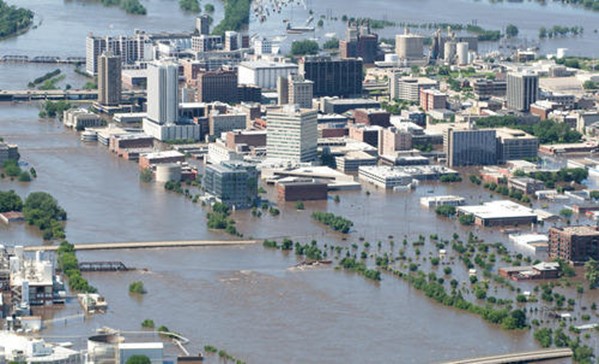- Courses
- GS Full Course 1 Year
- GS Full Course 2 Year
- GS Full Course 3 Year
- GS Full Course Till Selection
- Online Program
- GS Recorded Course
- NCERT (Recorded 500+ Hours)
- Polity Recorded Course
- Geography Recorded Course
- Economy Recorded Course
- AMAC Recorded Course
- Modern India, Post Independence & World History
- Environment Recoded Course
- Governance Recoded Course
- Science & Tech. Recoded Course
- International Relations and Internal Security Recorded Course
- Disaster Management Module Course
- Ethics Recoded Course
- Essay Recoded Course
- Current Affairs Recoded Course
- CSAT
- 5 LAYERED ARJUNA Mentorship
- Public Administration Optional
- ABOUT US
- OUR TOPPERS
- TEST SERIES
- FREE STUDY MATERIAL
- VIDEOS
- CONTACT US
Urbanization in Flood Zones
Urbanization in Flood Zones

Latest Context:
Recently, the World Bank published a study on ‘rapid urban growth in flood zones since 1985’.
What are Flood Zones?
- These are specific geographical areas that are categorized based on their susceptibility to flooding.
- These zones help people understand the level of flood risk in a particular area and can influence various aspects of land use and development.
- Flood zones are typically delineated using various factors, including historical flood data, topography, hydrological studies, and climate patterns.
Key findings of the study are:
- From 1985, the number of the world’s settlements in the riskiest flood zones has increased by almost 122%, while it has increased by 80% in case of safest areas.
- Even after extreme precipitation and flood threats, especially the middle- and low-income countries continue to increase their exposure to such threats with unplanned urban development. So, this shows that locally determined patterns of urbanization and development are also key factors to the exposure and vulnerability of people to climatic related risks.
What are the reasons for unplanned urbanization in flood zones?
1. Population Growth: Rapid population growth in many regions leads to an increased demand for housing and infrastructure. In some cases, urban areas expand into flood-prone areas simply because of the need for more space to accommodate a growing population.
2. Limited Available Land: In densely populated urban areas, there may be limited available land for development. This can lead to the encroachment of urbanization into flood-prone zones because there are few alternative options for development.
3. Economic Factors: Developers and property owners may be attracted to flood-prone areas because land in these areas can be more affordable compared to land in safer, less flood-prone locations.
4. Lack of Zoning and Regulations: Weak or poorly enforced land-use regulations, zoning laws, and building codes can contribute to unplanned development in flood zones. Without proper restrictions and oversight, development may proceed without adequate consideration of flood risks.
5. Short-Term Focus: Decision-makers, both at the government and individual levels, may prioritize short-term economic benefits over long-term flood risk considerations. This can result in the construction of homes and businesses in areas that are vulnerable to flooding.
6. Political and Regulatory Pressures: In some cases, political or economic pressures may lead to decisions that prioritize development in flood-prone areas. This can happen when there are competing interests or a desire for rapid economic growth.
Consequences of unplanned urbanization in flood zones:
- Increased Flooding Risk: Unplanned urbanization in flood zones significantly elevates the risk of flooding. When natural drainage systems are disrupted, and floodplains are occupied with surfaces like buildings and roads, water has nowhere to go during heavy rains or storm events, leading to increased flooding.
- Property Damage and Loss: Homes, businesses, and infrastructure located in flood-prone areas are at higher risk of suffering flood damage. This can result in significant financial losses for property owners and communities, as well as increased insurance claims.
- Loss of Life and Injury: Flooding in urban areas can put people's lives at risk. Sudden and severe floods can lead to injuries or loss of life.
- Displacement of Communities: Residents may be forced to evacuate their homes during floods, leading to temporary or long-term displacement. This can create social and economic disruptions, and in some cases, people may become permanently dislocated.
- Health Risks: Floodwaters can carry pathogens and contaminants, posing health risks to residents who come into contact with the water. Waterborne diseases, infections, and exposure to toxic substances can result from flooding events.
Key recommendations of the study:
- To continuously monitor urbanization and flood exposure patterns to make plans on time.
- To make investment in disaster preparedness, especially in areas with high flood exposure.
- To have a fresh look on land use and urbanization plans to avoid new construction in high- risk areas.



